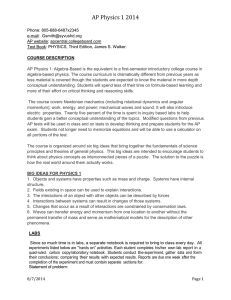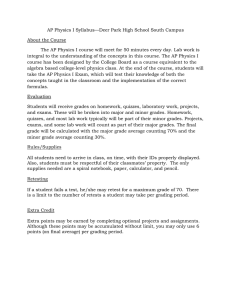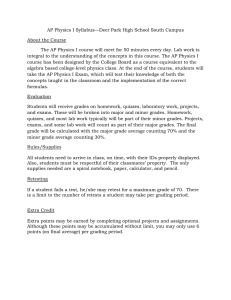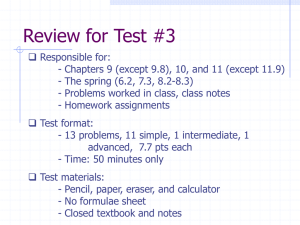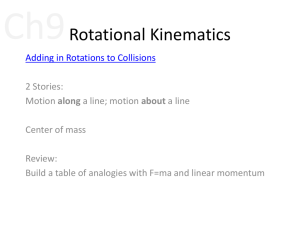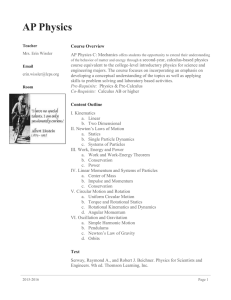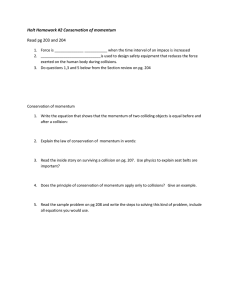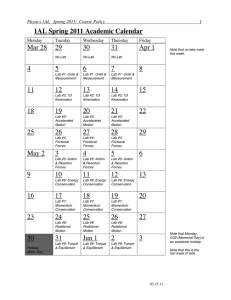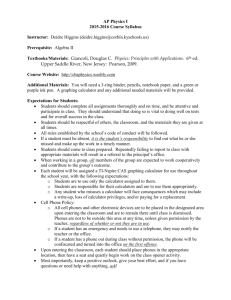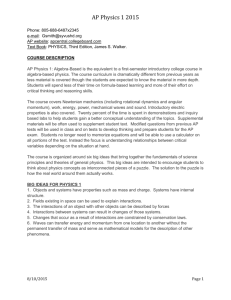AP Physics Course Introduction Textbook Giancoli, Douglas C
advertisement
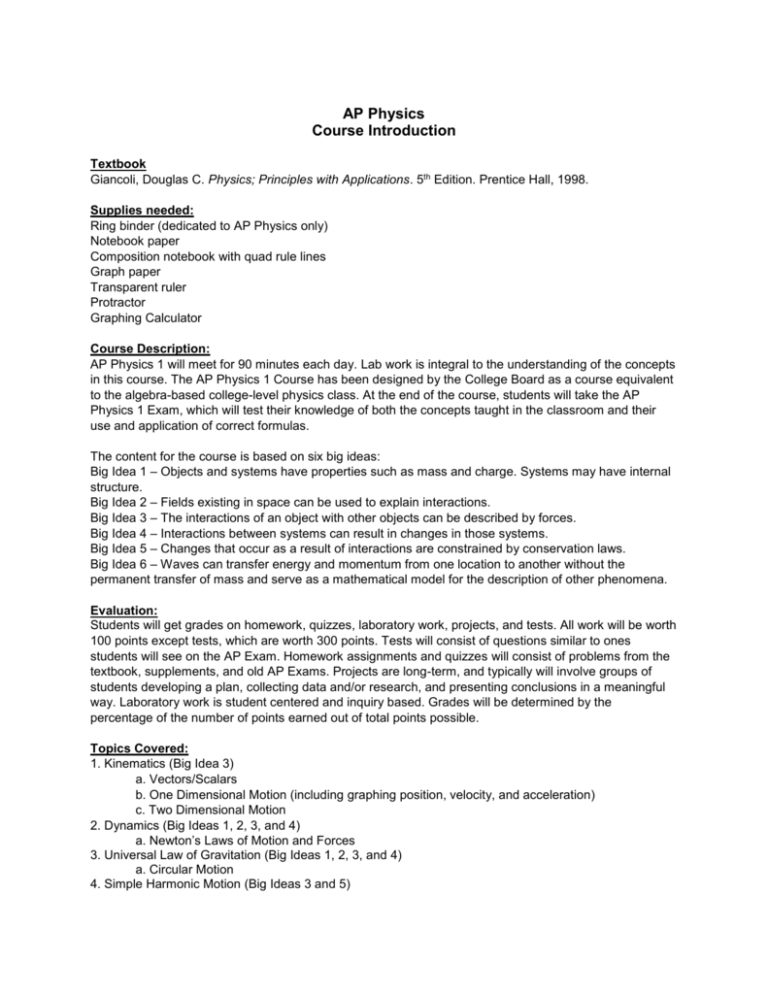
AP Physics Course Introduction Textbook Giancoli, Douglas C. Physics; Principles with Applications. 5th Edition. Prentice Hall, 1998. Supplies needed: Ring binder (dedicated to AP Physics only) Notebook paper Composition notebook with quad rule lines Graph paper Transparent ruler Protractor Graphing Calculator Course Description: AP Physics 1 will meet for 90 minutes each day. Lab work is integral to the understanding of the concepts in this course. The AP Physics 1 Course has been designed by the College Board as a course equivalent to the algebra-based college-level physics class. At the end of the course, students will take the AP Physics 1 Exam, which will test their knowledge of both the concepts taught in the classroom and their use and application of correct formulas. The content for the course is based on six big ideas: Big Idea 1 – Objects and systems have properties such as mass and charge. Systems may have internal structure. Big Idea 2 – Fields existing in space can be used to explain interactions. Big Idea 3 – The interactions of an object with other objects can be described by forces. Big Idea 4 – Interactions between systems can result in changes in those systems. Big Idea 5 – Changes that occur as a result of interactions are constrained by conservation laws. Big Idea 6 – Waves can transfer energy and momentum from one location to another without the permanent transfer of mass and serve as a mathematical model for the description of other phenomena. Evaluation: Students will get grades on homework, quizzes, laboratory work, projects, and tests. All work will be worth 100 points except tests, which are worth 300 points. Tests will consist of questions similar to ones students will see on the AP Exam. Homework assignments and quizzes will consist of problems from the textbook, supplements, and old AP Exams. Projects are long-term, and typically will involve groups of students developing a plan, collecting data and/or research, and presenting conclusions in a meaningful way. Laboratory work is student centered and inquiry based. Grades will be determined by the percentage of the number of points earned out of total points possible. Topics Covered: 1. Kinematics (Big Idea 3) a. Vectors/Scalars b. One Dimensional Motion (including graphing position, velocity, and acceleration) c. Two Dimensional Motion 2. Dynamics (Big Ideas 1, 2, 3, and 4) a. Newton’s Laws of Motion and Forces 3. Universal Law of Gravitation (Big Ideas 1, 2, 3, and 4) a. Circular Motion 4. Simple Harmonic Motion (Big Ideas 3 and 5) a. Simple Pendulums b. Mass-Spring Oscillators 5. Momentum (Big Ideas 3, 4, and 5) a. Impulse and Momentum b. The Law of Conservation of Momentum 6. Energy (Big Ideas 3, 4, and 5) a. Work b. Energy c. Conservation of Energy d. Power 7. Rotation (Big Ideas 3, 4, and 5) a. Rotational Kinematics b. Rotational Energy c. Torque and Rotational Dynamics d. Angular Momentum e. Conservation of Angular Momentum 8. Electrostatics (Big Ideas 1, 3, and 5) a. Electric Charge b. The Law of Conservation of Electric Charge c. Electrostatic Forces 9. Circuits (Big Ideas 1 and 5) a. Ohm’s Law b. Kirchhoff’s Laws c. Simple DC Circuits 10. Mechanical Waves and Sound (Big Idea 6) Laboratory Activities: Twenty five percent of the course will be lab work. Labs may take several in-class days to finish, and students may have to do work outside of class as well. Students are expected to keep a lab notebook where they will maintain a record of their laboratory work. Lab reports will consist of the following components: Title Question or Objective Procedure, including variables to be tested & controlled. Data in tabular form Calculations/Graphs Data analysis Conclusions Error analysis & Evaluation of the lab. Every major unit will have at least one inquiry-based lab, and inquiry-based labs will comprise approximately half of the laboratory work.
